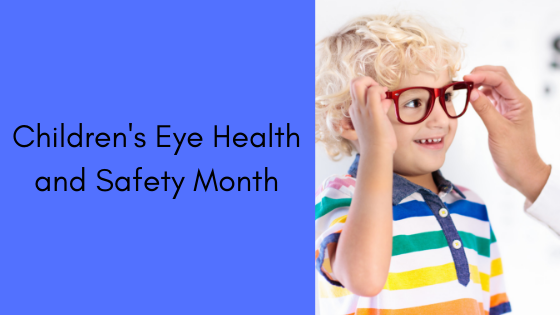According to the American Public Health Association, one out of four students (25%) has a visual problem serious enough to impede learning. Stop. The APHA did not say a “seeing” problem but a “learning” problem.
The standard 20/20 eye test measures how well a child can see letters, numbers or pictures on a standard eye chart from an approx. 20-foot distance. Not how well the child could put those letters together to form words and sentences. The test does not evaluate the individual’s reading comfort, eye teaming, eye tracking, and eye focusing skills.
This is where more comprehensive eye health testing comes in. And reason enough for such testing to take place in August during back to school (or starting school) activities.
If you haven’t used up your child’s annual well visit, this would be a good time to have your physician do simple children’s eye tests for “refractive errors.” These would include nearsightedness, farsightedness, and astigmatism. There are also diseases that could be detected, such as Amblyopia (lazy eye), Color deficiency (color blindness), Ptosis (drooping of the eyelid), and Strabismus (crossed eyes).
Should your family doctor sees cause for health safety concern, he/she will recommend additional testing with an ophthalmologist.
Children’s Eye Health Safety and Computers
When parents were growing up, no doubt warnings were given about watching too much TV. Eye strain from being too far away, or too close, or just watching too much. Now the concern is with computer eyestrain. To help parents now, the American Academy of Ophthalmology has created a 10 tip checklist:
• Set a kitchen timer or a smart device timer to remind them.
• Alternate reading an e-book with a real book and encourage kids to look up and out the window every two chapters.
• After completing a level in a video game, look out the window for 20 seconds.
• Pre-mark books with a paperclip every few chapters to remind your child to look up. On an e-book, use the “bookmark” function for the same effect.
• Avoid using a computer outside or in brightly lit areas, as the glare on the screen can create strain.
• Adjust the brightness and contrast of your computer screen so that it feels comfortable to you.
• Use good posture when using a computer and when reading.
• Encourage your child to hold digital media farther away, 18 to 24 inches is ideal.
• Create a distraction that causes your child to look up every now and then.
• Remind them to blink when watching a screen.
And if you have a little one not yet in school, consider ordering a free copy of the newly revised “Guide to Vision Health for Your Newborn, Infant, and Toddler.” It is offered by the National Center for Children’s Vision and Eye Health at Prevent Blindness.

